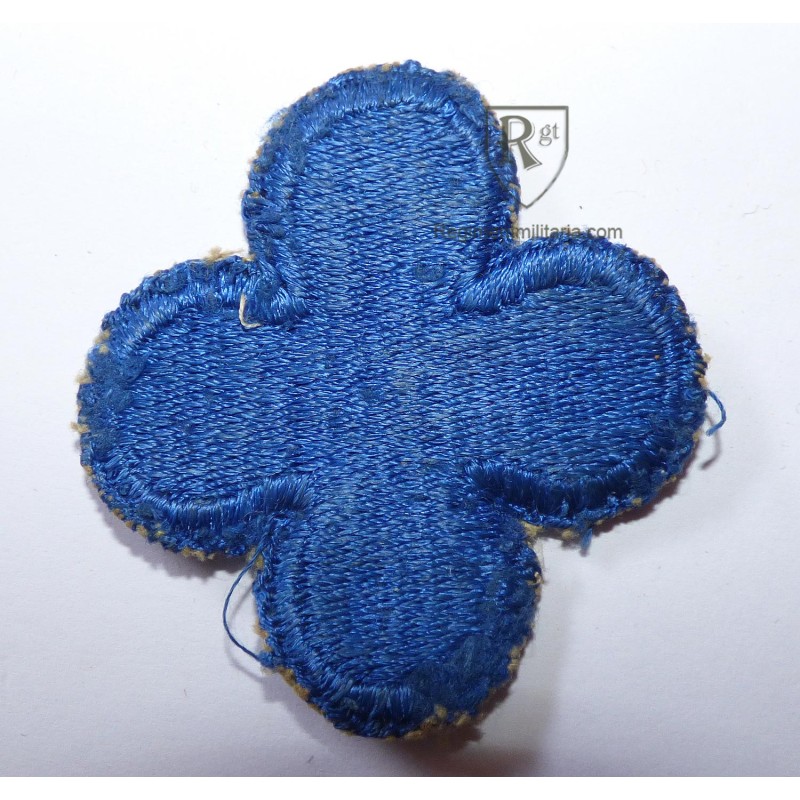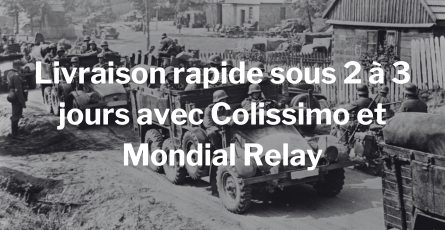

Banner

Banner




88th Infantry Division Patch.
 Garanties sécurité
Garanties sécurité
(à modifier dans le module "Réassurance")
 Politique de livraison
Politique de livraison
(à modifier dans le module "Réassurance")
 Politique retours
Politique retours
(à modifier dans le module "Réassurance")
88th Infantry Division Patch. original, WW2.
First Entered combat: Advance party on night of 3–4 January 1944 in support of Monte Cassino attacks.
First Organization Committed to Line: 2nd Battalion, 351st Infantry Regiment plus attachments
First combat fatality: 3 January 1944
Began post war POW Command: 7 June 1945. Responsible for guarding and later repatriating 324,462 German POWs.
The 88th Infantry Division was one of the first all-draftee divisions of the United States Army to enter the war. Ordered into active military service at Camp Gruber, Oklahoma, the division, commanded by Major General John E. Sloan, arrived at Casablanca, French Morocco on 15 December 1943, and moved to Magenta, Algeria, on 28 December for intensive training. Destined to spend the war fighting on the Italian Front, the 88th Division arrived at Naples, Italy on 6 February 1944, and concentrated around Piedimonte d'Alife for combat training. An advance element went into the line before Monte Cassino on 27 February, and the entire division relieved the battered British 46th Infantry Division along the Garigliano River in the Minturno area on 5 March. A period of defensive patrols and training followed. The 88th formed part of Major General Geoffrey Keyes' II Corps, part of the U.S. Fifth Army, under Lieutenant General Mark W. Clark.
After being inspected by the Fifth Army commander on 5 May, the 88th Division, six days later, drove north to take Spigno, Mount Civita, Itri, Fondi, and Roccagorga, reached Anzio, 29 May, and pursued the enemy into Rome, being the first unit of the Fifth Army into the city on 4 June, two days before the Normandy landings, after a stiff engagement on the outskirts of the city. An element of the 88th is credited with being first to enter the Eternal City. After continuing across the Tiber to Bassanelio the 88th retired for rest and training, 11 June. The division went into defensive positions near Pomerance on 5 July, and launched an attack toward Volterra on the 8th, taking the town the next day. Laiatico fell on the 11th, Villamagna on the 13th, and the Arno River was crossed on the 20th although the enemy resisted bitterly.
After a period of rest and training, the 88th Division, now commanded by Major General Paul Wilkins Kendall, opened its assault on the Gothic Line on 21 September, and advanced rapidly along the Firenzuola-Imola road, taking Mount Battaglia (Casola Valsenio, RA) on the 28th. The enemy counterattacked savagely and heavy fighting continued on the line toward the Po Valley. The strategic positions of Mount Grande and Farnetto were taken on 20 and 22 October. From 26 October 1944 to 12 January 1945, the 88th entered a period of defensive patrolling in the Mount Grande-Mount Cerrere sector and the Mount Fano area. From 24 January to 2 March 1945, the division defended the Loiano-Livergnano area and after a brief rest returned to the front. The drive to the Po Valley began on 15 April. Monterumici fell on the 17th after an intense artillery barrage and the Po River was crossed on 24 April, as the 88th pursued the enemy toward the Alps. The cities of Verona and Vicenza were captured on the 25th and 28th and the Brenta River was crossed on 30 April. The 88th was driving through the Dolomite Alps toward Innsbruck, Austria where it linked up with the 103rd Infantry Division, part of the U.S. Seventh Army, when the hostilities ended on 2 May 1945. The end of World War II in Europe came six days later. Throughout the war the 88th Infantry Division was in combat for 344 day
Reference: IND047
Reference: F2E396

88th Infantry Division Patch.
check_circle
check_circle